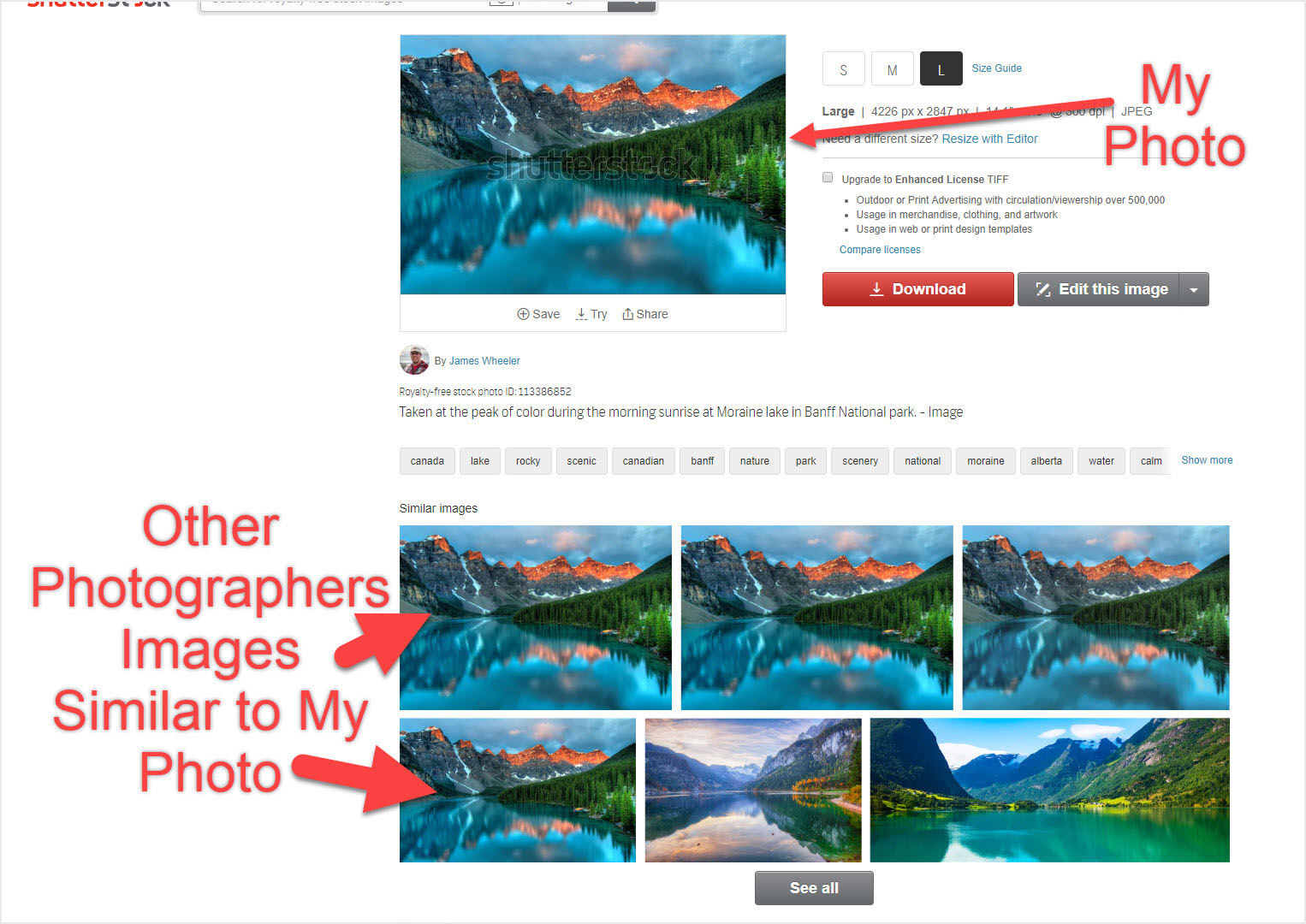If you’re anything like me, finding the perfect image to make your Facebook posts stand out is a must. Shutterstock offers a vast library of high-quality images that can elevate your content. But before you start downloading and sharing, it’s important to understand how to use these images legally. Using images without proper rights can lead to copyright issues, which no one wants. So, whether you’re a small business owner, a social media enthusiast, or just someone who loves sharing great visuals, knowing the ins and outs of Shutterstock’s licensing is key to staying compliant and avoiding headaches. Let’s explore how to do it right!
Understanding Shutterstock Licensing Options
Shutterstock offers different licensing options to suit various needs, and understanding these is crucial for legal use on Facebook. Broadly, there are two main types of licenses: Standard and Extended. Here’s a quick rundown:
| License Type | What It Covers | Usage Limits | Cost |
|---|---|---|---|
| Standard License | This license allows you to use images for most online and offline purposes, including social media, websites, blogs, advertisements, and more. It’s perfect for everyday use. | You can use the image up to 500,000 copies or views. It covers digital use, print up to 1 million copies, and promotional materials. | Lower cost, suitable for most personal and commercial projects with standard distribution. |
| Extended License | This provides broader rights, including unlimited copies, use in merchandise for sale, and large-scale campaigns. If you want to print images on products or use them in high-volume advertising, this is the way to go. | Unlimited use, no restrictions on copies or views. It also covers use in products for resale. | Higher price, but essential for extensive commercial use or large-scale campaigns. |
In addition to these, Shutterstock also offers enterprise licenses for large organizations, but for most Facebook users, Standard and Extended licenses are sufficient. Remember, the key is to choose the right license based on how you plan to use the image. If you’re just sharing a post, a standard license probably does the trick. But if you’re creating a product or running a big ad campaign, consider the extended license.
Lastly, always read the specific license details for each image. Sometimes, certain images might have restrictions or require attribution, even within a license type. When in doubt, consult Shutterstock’s licensing page or customer support—they’re there to help ensure you’re on the right side of copyright laws!
Steps to Properly Obtain Shutterstock Images for Facebook
Getting the right images from Shutterstock for your Facebook posts isn’t as complicated as it might seem, but it’s important to follow the correct steps to stay within legal boundaries. Here’s a simple, step-by-step guide to help you do it right:
- Create a Shutterstock Account: First things first, you’ll need an account. Signing up is straightforward—just head over to Shutterstock’s website and register with your email. Having an account also helps you manage your licenses and downloads more easily.
- Search for the Perfect Image: Use keywords related to your content to find the right image. Shutterstock has a vast library, so take your time to browse through collections, filters, and categories to find an image that fits your message and branding.
- Check the License Type: Before downloading, always verify the license type. Shutterstock offers various licensing options, but for Facebook posts, a standard license usually suffices. However, if you plan to use images in a commercial context or modify them significantly, you might need an enhanced license.
- Download Your Image: Once you’ve selected the image and confirmed the license, proceed to download. Keep in mind that you’ll need to purchase credits or a subscription plan, depending on your usage frequency. Remember, free downloads are generally not available on Shutterstock—paid licenses are the norm.
- Keep Documentation of Your License: After downloading, save the license information, receipt, or license certificate. This documentation can be helpful if any questions about your rights arise later on. It’s always better to have proof of your legal license.
- Use the Image on Facebook: After completing these steps, you’re ready to upload your Shutterstock image to Facebook. Make sure to give credit if the license requires it, although standard Shutterstock licenses usually don’t mandate attribution—just ensure your usage aligns with the license terms.
By following these steps, you ensure that you’re legally obtaining and using Shutterstock images, avoiding potential copyright issues, and respecting the work of photographers and artists. Remember, proper licensing isn’t just about legality; it’s also about supporting creators who put effort into producing stunning images you want to share with your audience.
Tips for Ensuring Legal Compliance When Posting Images
Once you have your Shutterstock images ready to go, the next step is to post them responsibly on Facebook. It’s essential to keep a few tips in mind to stay compliant with copyright laws and Shutterstock’s licensing terms. Here’s what you should consider:
- Always Use Licensed Images: Never upload images without proper licensing. Using unauthorized images can lead to copyright infringement, legal trouble, and potential fines. Stick to images you’ve purchased or obtained through legitimate licensing.
- Understand Your License Terms: Different licenses come with specific restrictions. For example, a standard license might limit the number of copies or derivatives, while an enhanced license might allow broader use. Read your license agreement carefully to ensure your Facebook post complies with these rules.
- Respect Image Modifications: If you modify an image—such as cropping, adding text, or combining it with other visuals—make sure your license permits such alterations. Some licenses restrict modifications, so double-check before editing.
- Give Proper Attribution if Required: Although Shutterstock’s standard licenses typically do not require attribution, some images or special licenses might. Always check the license details and include attribution if it’s a requirement. A simple credit like “Image courtesy of Shutterstock” can suffice if needed.
- Keep Records of Your Licenses: Save all licensing documents, receipts, and download confirmations. In case of disputes, having proof of your legal right to use an image is invaluable. Consider keeping a dedicated folder for your licensed content.
- Avoid Using Watermarked or Free Images from Unofficial Sources: Watermarked images are not for final use and should be purchased or licensed before posting. Also, steer clear of free images from unverified sources—these often come with risks like copyright claims or low quality.
- Limit the Number of Posts with Licensed Images: Using a large number of licensed images can be costly, but it’s a worthwhile investment. To stay within budget, plan your content calendar and prioritize images that truly enhance your message.
- Monitor Your Posts: After publishing, periodically check your Facebook posts to ensure they still comply with licensing terms. If a license is revoked or expires, remove or replace the image promptly.
By keeping these tips in mind, you’ll not only stay legally compliant but also demonstrate professionalism and respect for creators. Remember, responsible image use builds trust with your audience and protects your brand’s reputation. When in doubt, consult legal advice or reach out to Shutterstock’s support team—they’re there to help you navigate licensing questions.
Common Mistakes to Avoid When Using Shutterstock Images on Facebook
Using images from Shutterstock can really boost your Facebook content, but it’s also easy to make mistakes that could land you in hot water. Let’s go over some of the most common pitfalls and how to steer clear of them.
1. Ignoring License Terms
Every Shutterstock image comes with specific licensing rules. Some images are available under standard licenses, while others require extended licenses for certain uses. Failing to read or understand these terms can lead to copyright infringement. Always double-check the license details before using an image, especially if you plan to modify or promote it.
2. Using Images Without Proper Attribution
Unlike some free image sources, Shutterstock’s licensed images don’t usually require attribution. However, if you’re in a context where attribution is necessary (such as specific campaigns or licensing agreements), neglecting to give credit can be problematic. Always follow the license requirements to avoid legal issues.
3. Overusing the Same Image
Reusing the same Shutterstock image multiple times on Facebook without variation can make your content look stale or spammy. To keep your audience engaged, try to diversify your image choices or use editing tools to give each post a fresh look.
4. Forgetting About Image Quality and Size
Uploading low-resolution images or images that don’t fit Facebook’s recommended dimensions can make your posts look unprofessional. Always use high-quality images and resize them appropriately to ensure they display well across devices.
5. Not Considering the Context
Even if an image is legally licensed, it might not be appropriate for your brand or message. Avoid using images that could be misleading, offensive, or misrepresentative of your business. Think about the story you want to tell and choose visuals that align well with your message.
6. Neglecting to Keep Records
Always save your license documentation and proof of purchase. If someone questions your use of an image, having records can help resolve disputes quickly and smoothly. It’s a good habit to organize your Shutterstock license receipts and correspondence.
Additional Resources for Legal Image Use on Social Media
If you’re serious about staying on the right side of copyright law and want to expand your knowledge beyond Shutterstock, there are plenty of helpful resources out there. Here are some of the best ones to keep bookmarked:
- Creative Commons Licenses — Learn about different types of Creative Commons licenses and what they allow. The official site, creativecommons.org/licenses/, offers comprehensive guides.
- Facebook’s Copyright Guidelines — Familiarize yourself with Facebook’s policies to understand what’s allowed and what isn’t. Check out their official help center: facebook.com/help/.
- Stock Image Alternatives — Explore free and royalty-free image sites like Unsplash, Pexels, and Pixabay. These platforms often offer images that are safe to use with minimal restrictions.
- Legal Advice Resources — For complex cases or if you’re unsure about licensing, consult legal resources or consider hiring an intellectual property attorney.
- Educational Blogs and Webinars — Many online marketing and legal websites host webinars and write articles about copyright law and best practices for social media content.
Remember, staying informed is the best way to protect yourself and your brand. Always read licensing agreements carefully, keep records, and when in doubt, consult professionals. Using images legally not only keeps you out of trouble but also builds trust with your audience.



